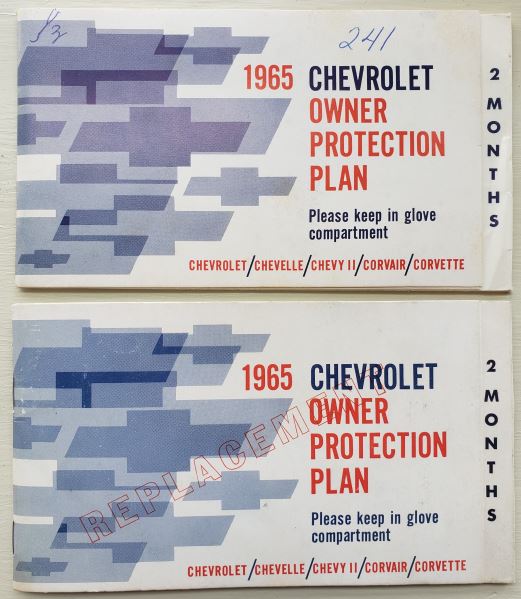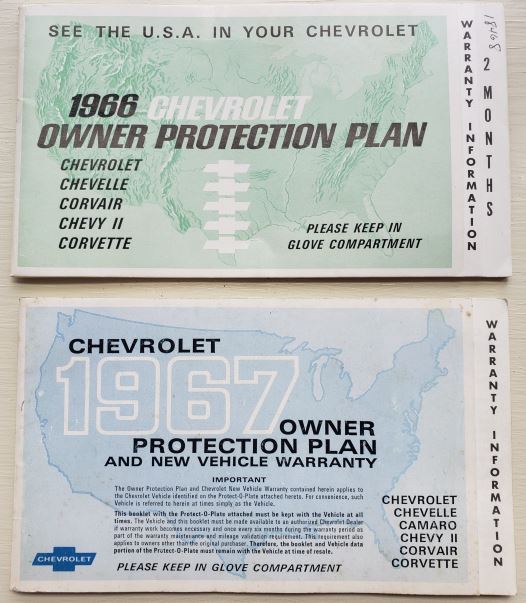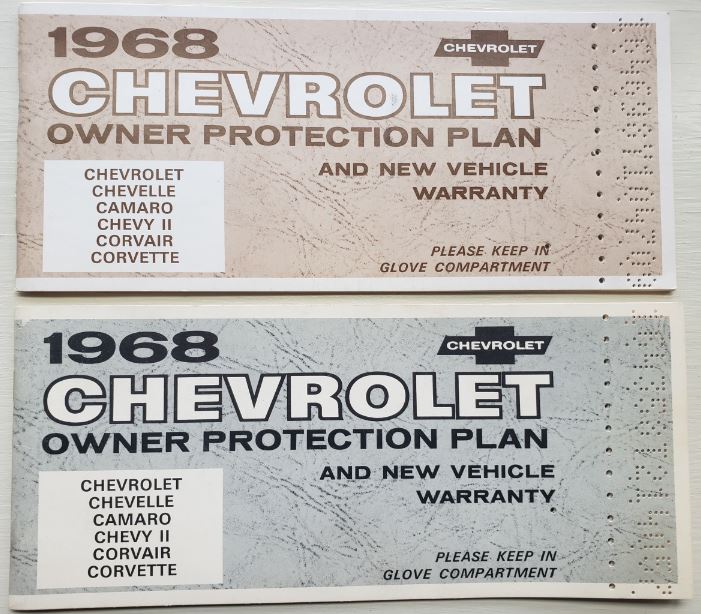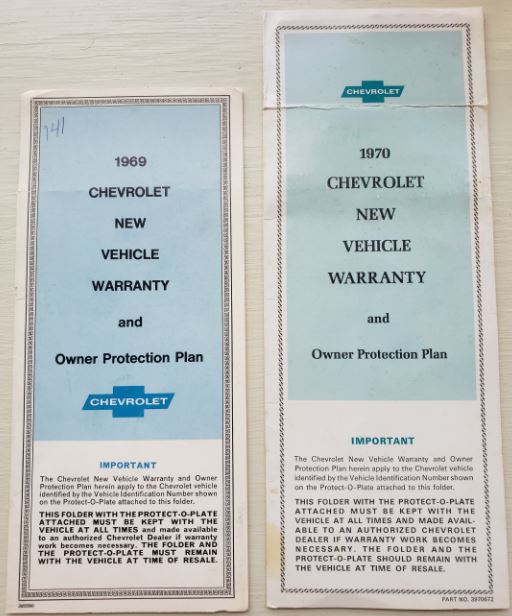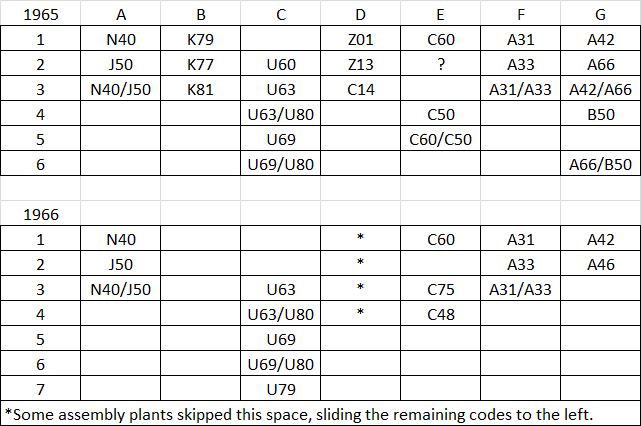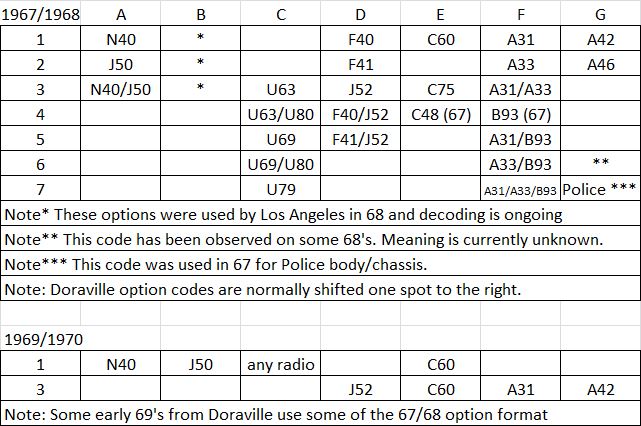©2020, Full-Size Chevrolet Research Group
Edited by Warren Leunig
Version: Sunday, 17-May-2020 15:51:20 EDT
Some cars still have their original owner protection plan (warranty book). If it was built between the years 1965-1972, it should have the metal Protect-o-Plate in the back. It contained basic information about the car such as drivetrain ID, trim, paint and some options, which was used by the service department. They were first used in 1965 and last used in 1972. Trim and paint codes were largely omitted in 1969 and not used at all in 1970. The following report will explain how to decode them. The information was reversed on the plates so it would appear correctly when imprinted onto the service forms. The owner’s information was applied at the dealership using Dymo tape with the GM logo. In a few cases, the dealership temporarily removed the plate and used a machine to stamp in the owner’s information. I’ll flip the images I use so you can read them. If you are trying to read yours, try holding the plate up to a mirror. The last section of this report will contain an overview of warranty books from 1958-1970.
Format and Examples

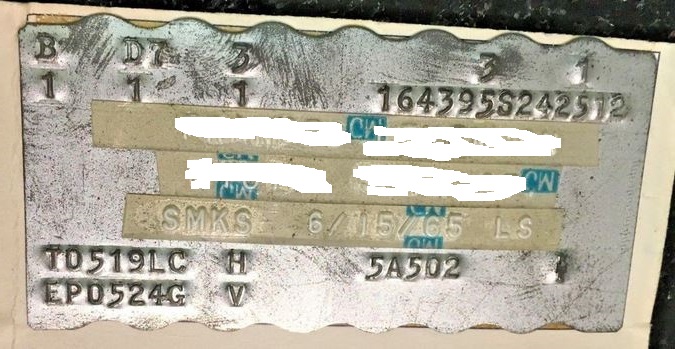
The following plate decodes to a Mist Blue Impala four door hardtop with beige vinyl top and blue interior built at St, Louis MO. It had a 396 engine with Holley carburetor, Turbo 400 transmission, 2:73 open rear axle and was assembled in May. The options shown are power brakes & power steering, AM Pushbutton radio, comfort & convenience group (Type A), air conditioning, power windows and power seat.
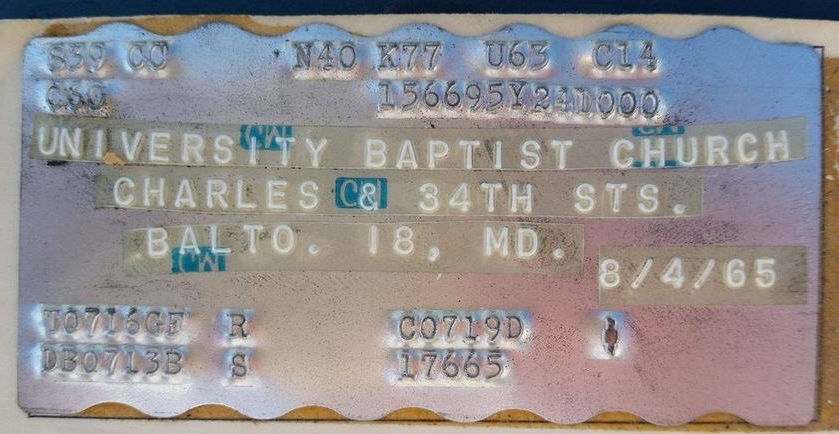
This plate is from a Ermine white Belair four door sedan with blue interior built at Wilmington, DE. It had a 283 engine with Rochester carburetor, Powerglide transmission and 3:36 open rear axle. Final assembly was in July. Options shown are power steering, 55 amp alternator (included with a/c), AM Pushbutton radio, two speed windshield wipers and air conditioning. 17665, under the transmission code, is the sequential body number from the cowl tag. Note* Wilmington did this for the whole model year and Arlington did it for the first month or so of production. Also, Wilmington always stamped K77 on cars that had air conditioning, even though it was part of the option.

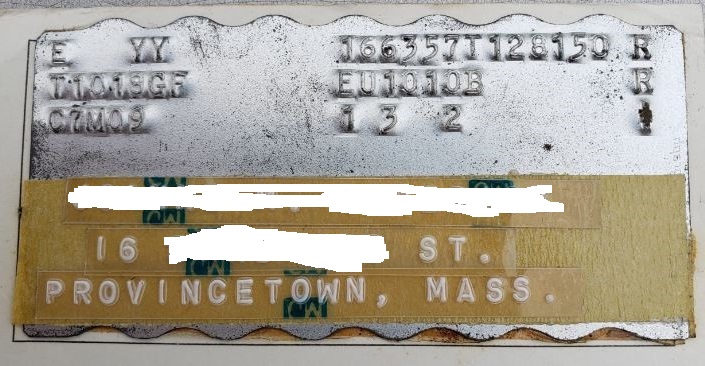
The following plate is from a Yellow 67 Caprice 2 seat wagon with black interior built at Tarrytown, NY. It had a 283 engine with Rochester carburetor, 3:36 open rear axle and Powerglide transmission. Final assembly was in October and it shows power steering, AM Pushbutton radio and power tailgate window for options.
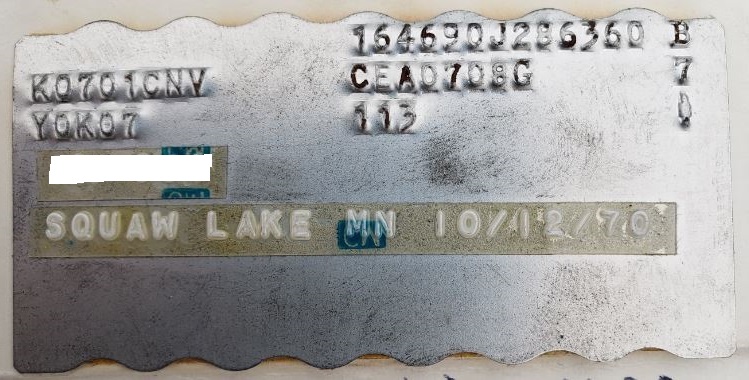
And this plate from decodes to a 1970 Impala four door sedan built at Janesville, WI. It had the base 350 engine with Bay City carburetor, 2:56 open rear axle and a Turbo 350 transmission. Options were power steering, power brakes and a radio.
Decoding
Some of the items on the Protect-o-Plates have already been decoded elsewhere on this website and there will be a link to take you to that section.
The interior and paint codes were used on the 1965-1968 plates then mostly phased out after that. On 65’s built at BOP plants, they used the actual trim code off the cowl tag instead of a single letter. For paint decoding, go here.

For VIN decoding, go here.
There were 4 manufacturers of carburetors and their codes are:
B – Bay City
C – Carter
H – Holley
R – Rochester
Click the following links decoding specific drivetrain parts:
Engine
Transmission
Rear Axle
The assembly month code was used to show the month of final assembly. 1965 was such a long model year, that some plants made cars into August of that year! After 65, the model year ended in July. Note: 65’s from Tarrytown built in August used a D for the month code.

The option format was fairly consistent between the plants. Minor differences are noted in the charts. One big difference is the BOP plants in 65 spelled out the RPO codes instead of using single digits. I showed an example in the format section.
Replacements and Errors
Replacement warranty books started in 1964. Typically the word “replacement” was printed across the front cover. These were used if the original was lost and in later years, when the warranty was transferred to the next owner. Up to 1967, replacement Protect-o-Plates followed the original format very closely. Replacements will not have the option codes stamped and in some cases, the carburetor code omitted. The 65 on the left has an extra R on the bottom line, which probably means replacement. I’ve observed some with the full interior code shown such as the example on the right, which also has the owners info stamped into the plate. That was common on replacements starting that year.
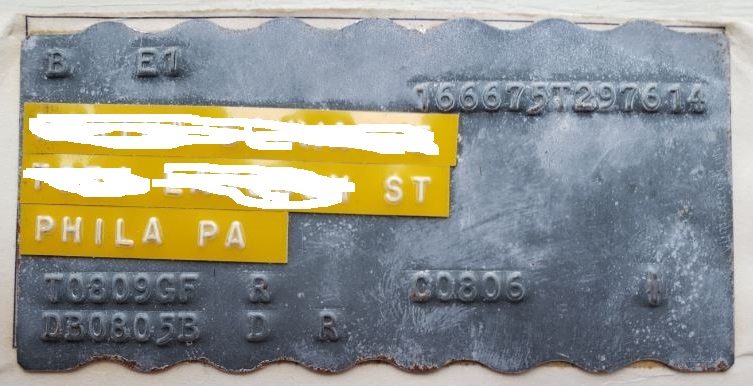
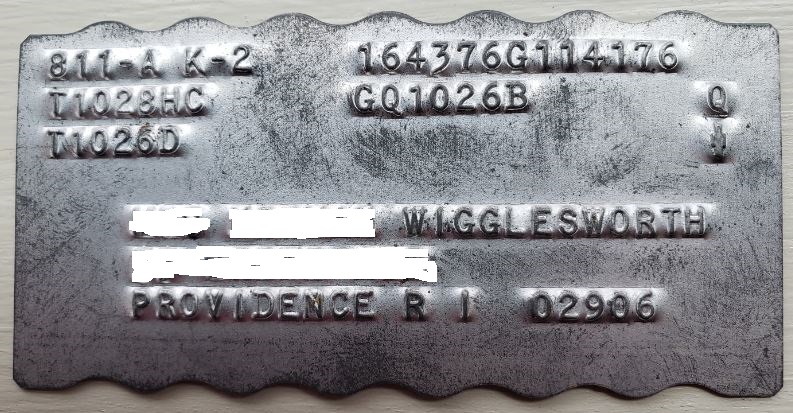
Sometime in late 1967, the format for replacement Protect-o-Plates changed and much less info was stamped into the plate as you can see in the example below. The plate is from a 1970 Impala and besides the owner’s info, there is minimal data. The 2 near the Chevy bowtie means this person was the 2nd owner of the car. If there is no number, then it probably shows the original owner. I’ve seen a 3 there before but it was unusual for a car to have 3 owners before the warranty ran out. Along the bottom, you have the warranty coverage, 5-50 for 5 years/50,000 miles. 180 or 18,000 is the mileage the car had when acquired by the 2nd owner. (163 would be 16,300 miles) And 1-0 is the date the warranty started, January of 1970 in this case.
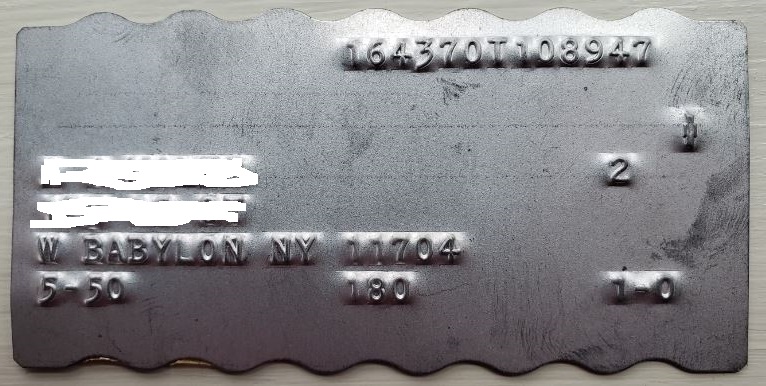
For the 68 model year, most replacement Protect-o-Plates were shipped from Detroit on this card that was supposed to be affixed to the back cover. The top half of the back cover with the original plate was supposed to be cut off and the replacement stuck in. The following pictures show a replacement that was never attached to the original warranty book! Chevrolet actually mailed these directly to the owners in most cases so some naturally never bothered to follow the instructions. These cards had the plate imprinted on the front so the information could be easily read. I have also shown a pair of photos depicting a replacement properly attached to the warranty book.
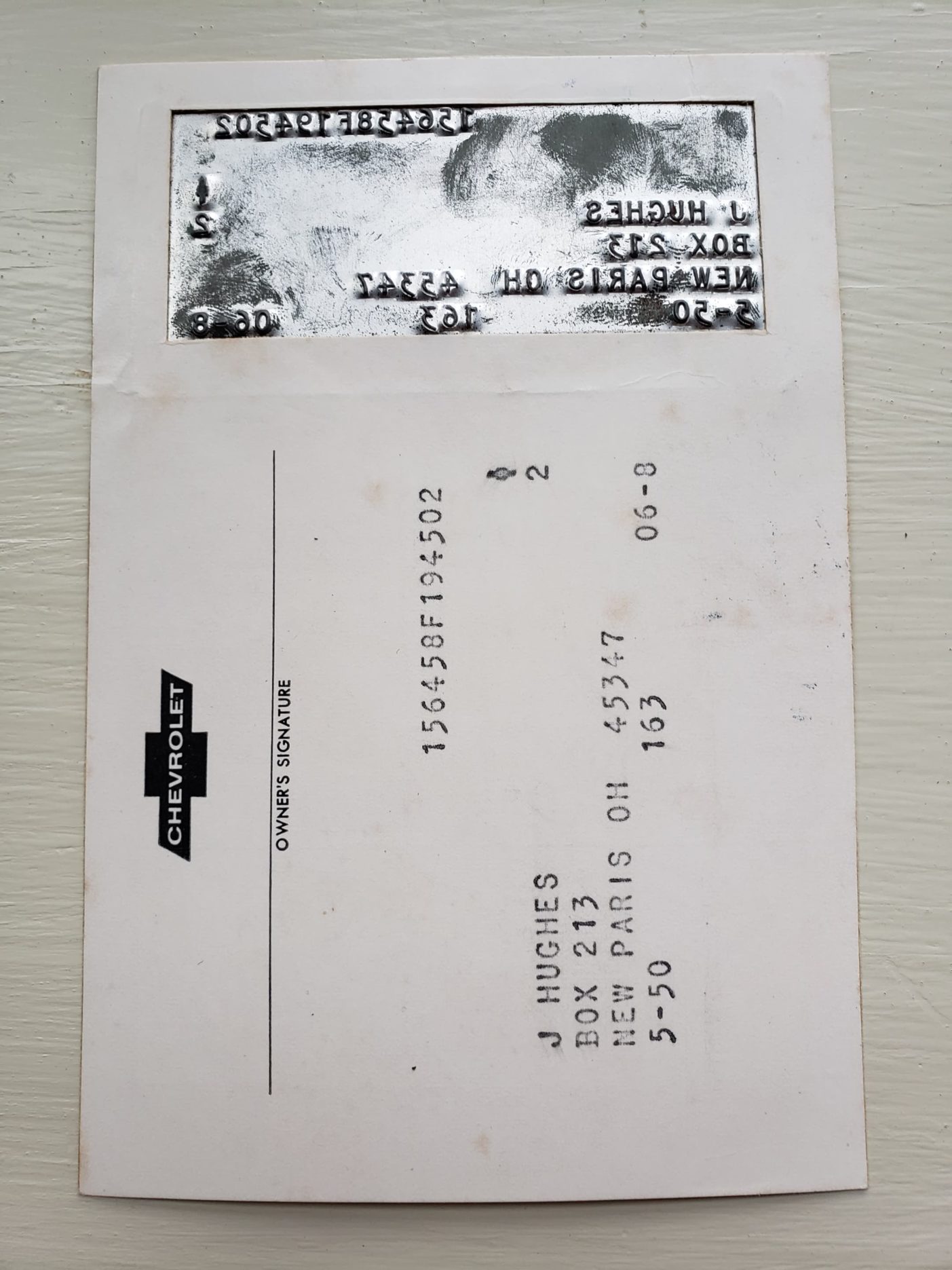
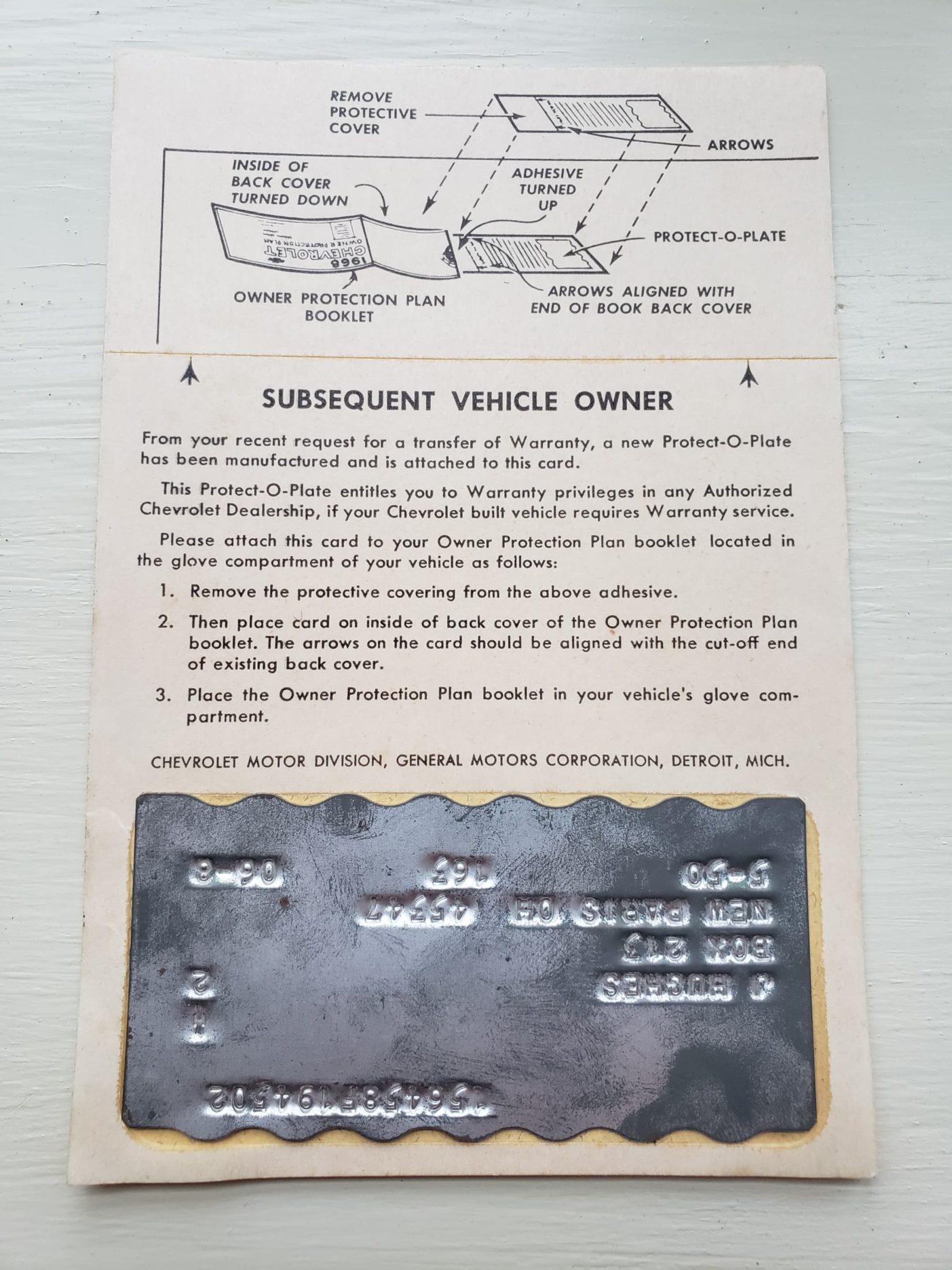
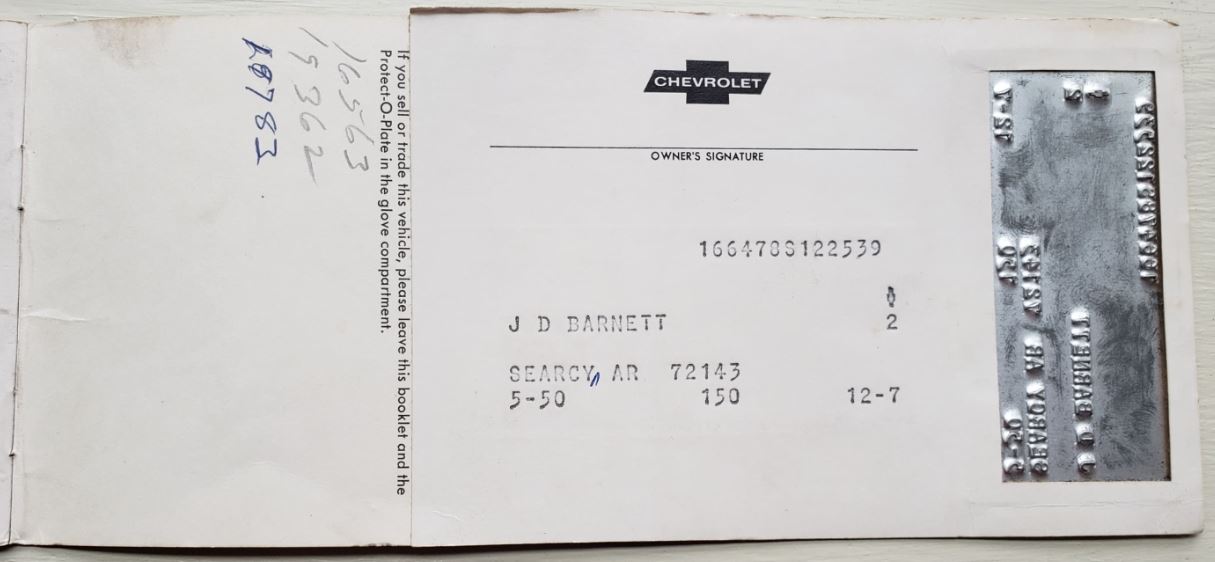

I’ve seen many Protect-o-Plates with errors that were not discovered by the assembly plants. Here are two of the most memorable. If you take a quick glance at the 65 plate, you will see a serial number for a Impala sport coupe from Norwood. However, if you look more closely, the engine code is PN and rear axle code is BA. Both of those codes go to a Chevy 2! Norwood built both fullsize and Chevy 2 models in 1965 and someone put the wrong model in the serial number!
The other plate is from a 67 Caprice coupe with 396 engine from Janesville. I’m guessing the engine suffix code was hard to read because they stamped the partial vin off the engine pad instead! At least they stamped something as I’ve seen plates where a drivetrain was omitted completely, leaving a blank space!
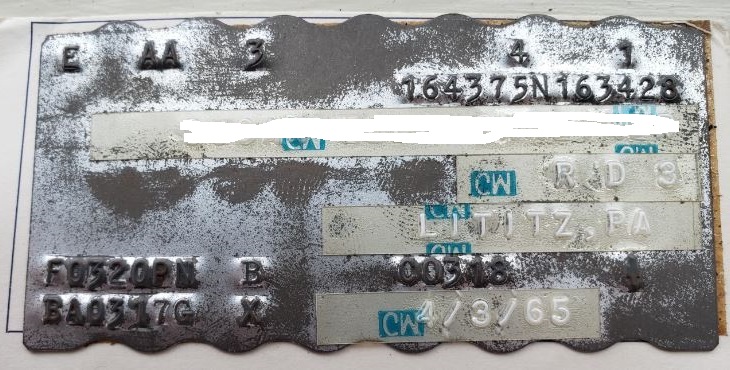

Warranty Book Overview 1959-1970
Chevrolet first began using warranty books in 1959. Prior to that, it was a small pamphlet, where owner and dealer information was filled out on the front. Before the Protect-o-Plates came out for 1965, the warranty books had an “Owner Identification” page, which contained that information. Attached to that page was a “New Owner’s Service File Record,” which was a perforated piece of paper that the dealer would keep in the car’s file after being filled out. That piece is normally missing as it was supposed to be removed. I’ll show pictures of the warranty books for each year up to 1964. The terms protection plan and warranty book were both used by dealers back then.
Shown below is are 1959, 1960, 1961 and 1962.


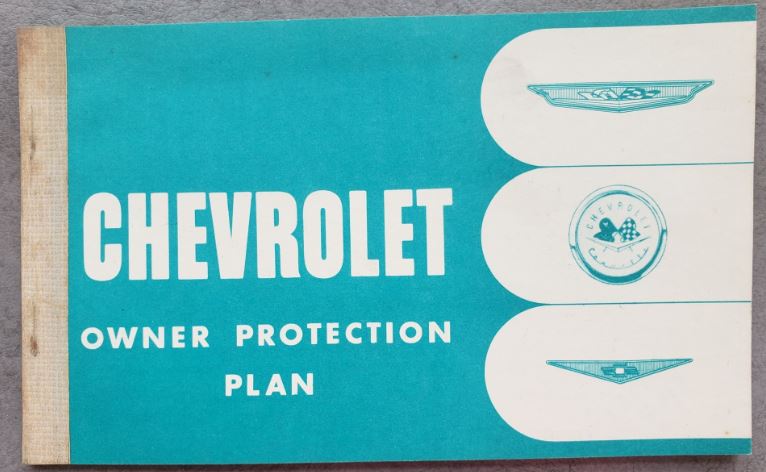
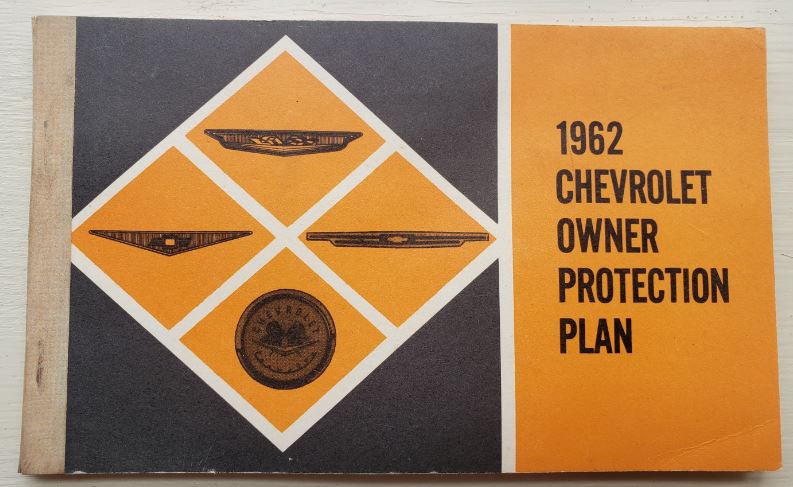
The below pictures are the following:
1) 1963 protection plans (Yellow 1st edition and Pink 2nd edition)
2) 1964 protection plan with replacement from same car. Owner must have lost the original then later found it. Owner ID pages from both shown.
3) 1961 and 1963 Canadian protection plans. Notice sequential part of serial number stamped, top right on the front cover.
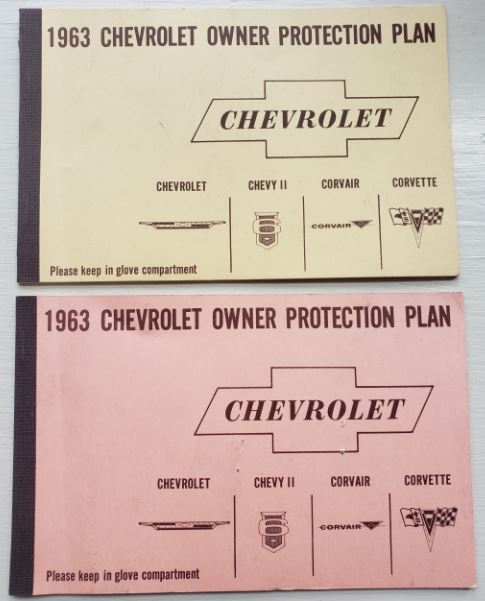
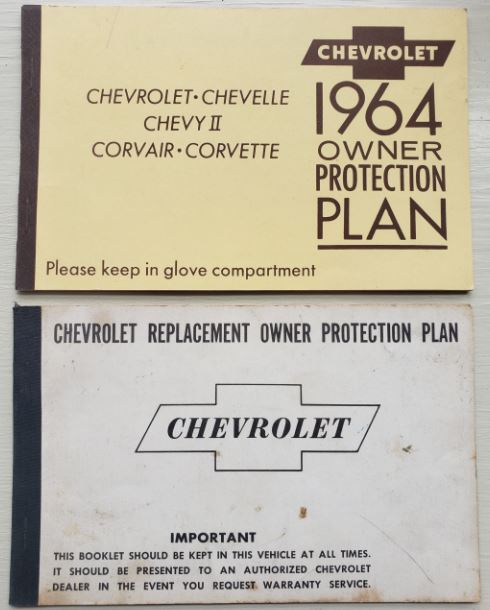

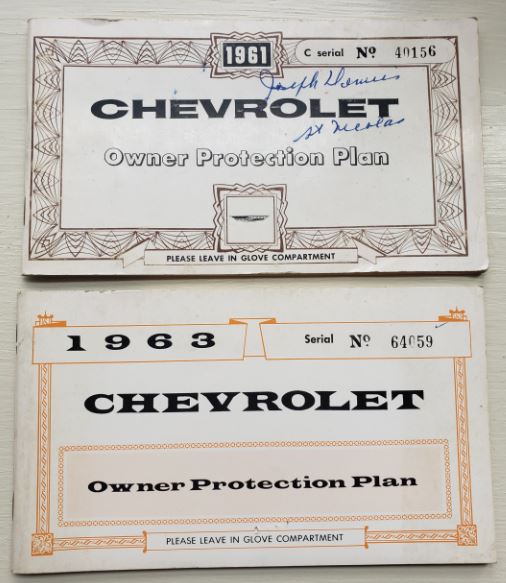
The following pictures are below:
1) 1965 regular and replacement protection plans. The 1966-1970 replacements also had replacement printed on the cover.
2) 1966 and 1967 protection plans.
3) 1967 temporary protection plan card. There was a shortage at the start of the model year so these cards were used until the booklets were available.
4) 1968 1st (peach colored) and 2nd edition (gray colored) plans. There was a change to the warranty coverage at the start of the 68 model year so dealers were supposed to tear off the back cover with plate and leave it in the glove box. When the 2nd edition plans came in, the dealer was supposed to transfer the plate into it. The 1968 plans had the vin punched through the pages at the assembly plant except those where the dealer transferred the plate over. The 1st edition books are very rare as they were supposed to be thrown away.
5) 1969 and 1970 protection plans, which now looked more like pamphlets.
